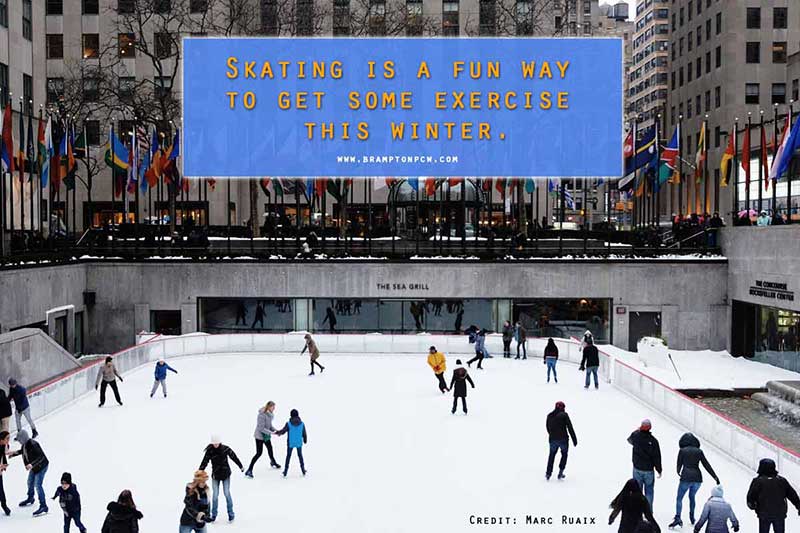Ice skating is an enjoyable winter activity that offers many benefits to adults and children alike. It teaches balance and coordination and is a great way to get some exercise and quality family time. There is, of course, some risk of falling and being injured on the ice, especially if you’re still learning how to balance and move forward at the same time. Falls are bound to happen, but with these basic safety tips, skaters of all levels can prevent injury and have fun.
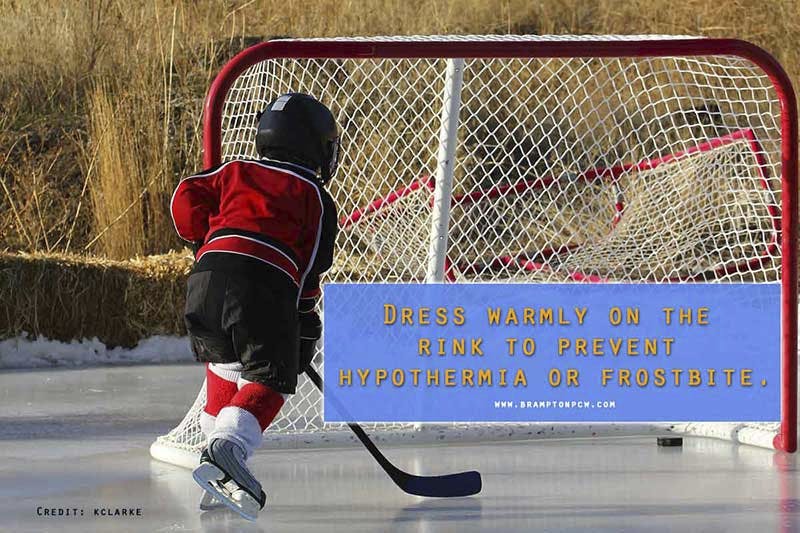
What to Wear
Whether you’re going to be skating indoors or out, it’s important to stay warm. It can get very cold on the ice, even inside. Dress in layers so you have the option of removing clothes if you get hot. Put on thermal leggings and long sleeves underneath the rest of your clothing. These garments are made of special fabrics that trap in body heat and will keep you warm when temperatures drop. Wear gloves to protect your hands and fingers as they glide through the cold air, and put on a hat so that heat doesn’t escape from your head. Extra clothing will prevent frostbite and keep you warm as you move.
One thing not to layer, however, are your socks. Wear thin socks or even nylons under skates to give you as ‘barefoot’ a skating experience as possible. However, if your feet are cold, wear a sturdy pair of socks that aren’t too thick. You’ll be much warmer and at less risk of developing sores or blisters.
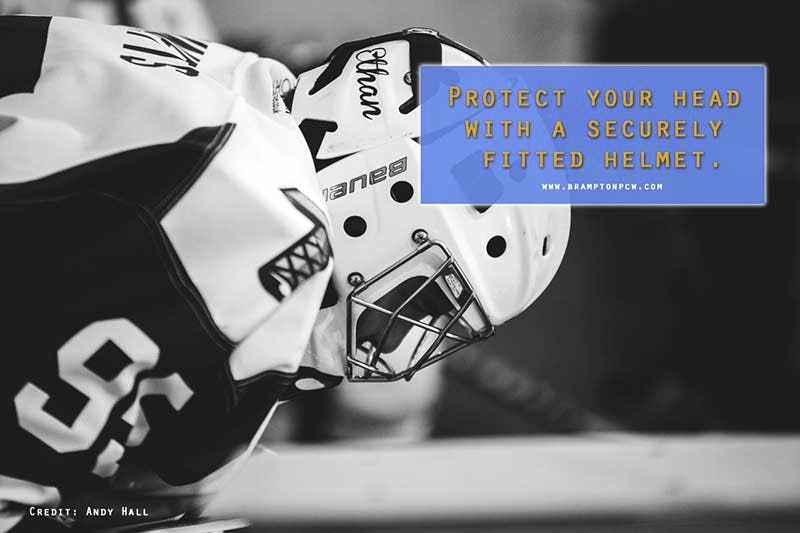
Skates and Other Equipment
Before going skating, ensure that you have the proper gear. The most important equipment for regular recreational ice skating are properly fitting and well-maintained skates and a good helmet. It’s not that difficult to fall on the ice and it’s important to stay protected from a head injury, especially if you’re a beginner. (Children should always wear a helmet.) It should fit comfortably without being too loose, and the strap should be buckled properly underneath the chin.
Skates should be the correct size and fit comfortably. If they’re too big, your ability to balance on the ice will be compromised. Skates that are too small may be painful or cause blisters, and can potentially lead to frostbite due to lack of circulation. When trying on skates, tie the laces snugly all the way to the top. Doing so will provide the most support and give you better control on the ice.
Skate blades must be sharpened regularly. Remember to check them before skating; dull, poorly maintained blades can make it easier to fall. A properly sharpened blade will have a slight curve, and a flat blade means it’s worn all the way down and needs to be replaced. After you finish skating, wipe the blades dry before putting them away so they don’t rust and become unusable. To stay extra safe, consider buying elbow and knee pads. It’s essential that children wear this layer of protection, especially when they’re first learning how to skate.
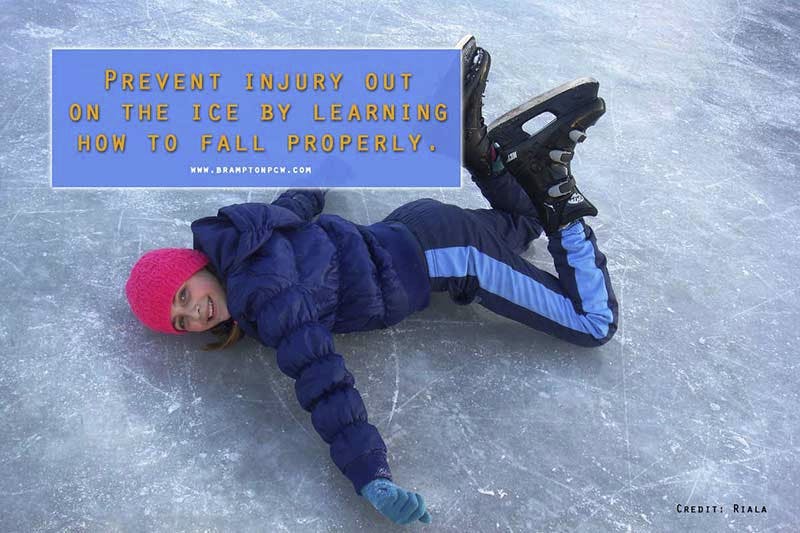
Technique
If you’re a beginner skater with little or no experience, keep some space between you and others on the ice. Maintaining a safe distance will prevent you from pulling anyone down or injuring someone with your blade if you fall. Perhaps start by skating close to the wall of the rink. This will provide some support and keep you upright. (If there’s a railing you can hold onto, all the better!)
If you fall, try to get up quickly so oncoming skaters don’t bump into you. Get on your hands and knees and carefully stand up; trying to rise from a seated forward-facing position is trickier and can cause another fall.) Learn the proper way to fall on ice and prevent injury. Teach these techniques to your children so they’ll be safe on the ice as well.
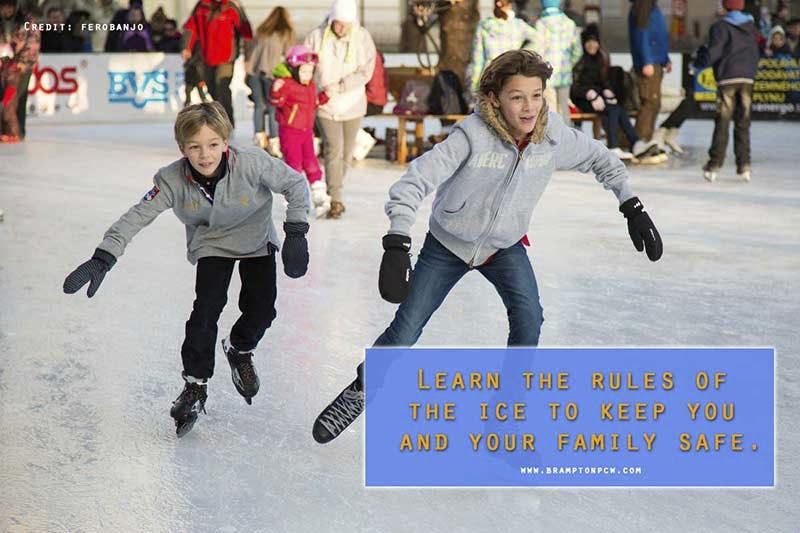
Safety for Children
Children are at greater risk of injury on the ice because they’re smaller and can be knocked over easily. Inexperienced skaters and young children who have not yet gained a good sense of balance may fall more frequently. A more capable adult skater should be nearby or the child should skate near the edge of the rink so he or she has access to the wall or railing.
Remind children to always skate in the same direction as others. Encourage them to keep a safe distance from the crowd to prevent them from hurting anyone if they fall or from being pushed over accidentally. Finally, make sure that children always wear protective equipment on the ice—especially a helmet.
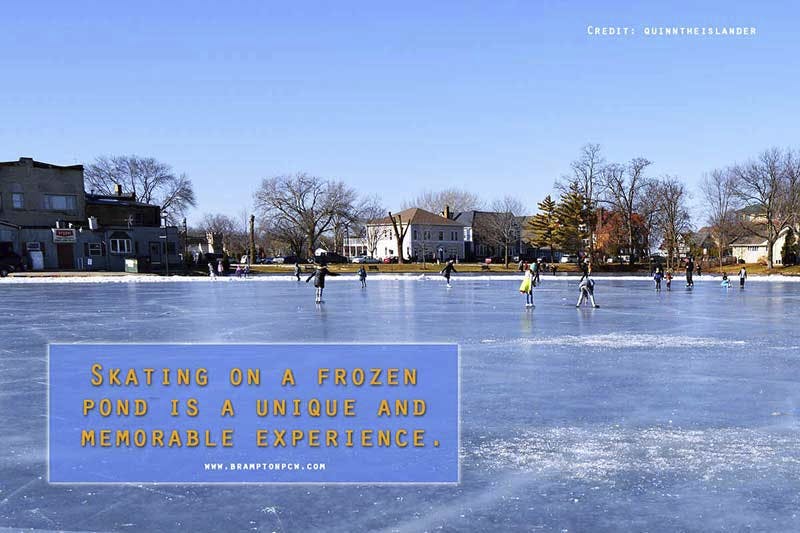
The Ice: Is It Safe?
If you’re skating on a frozen lake or pond, you must first know how to determine if the ice is safe and if it’s strong enough to hold weight without cracking. Ice has to be at least 15-20 centimetres in thickness in order to be considered safe to skate on, so check it carefully before lacing up. Stay away from areas where there are small spots of open water. This indicates that the ice is too thin or that it’s starting to melt.
Another indication of thin ice is if it has a greyish colour. The strongest and safest ice is blue and should be suitable for skating. Regardless, always play it safe around frozen lakes or ponds and obey any posted warnings.
Ice skating is a fun and healthy activity and you want to feel comfortable out there. Hopefully, these tips will keep you safe this winter and give you the confidence to enjoy yourself without worry.
At Brampton Physiocare & Wellness Clinic, we’re dedicated to helping you recover from injury with the right diagnosis and treatment. Our team of experts offers physiotherapy, massage therapy, orthotics, and many other services. In the unfortunate event of a fall while out on the ice, we can help you get back on your feet—and into your skates—as soon as possible. Give us a call at (905) 497-1311 or email us to book an appointment.

